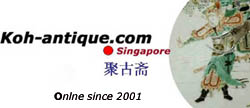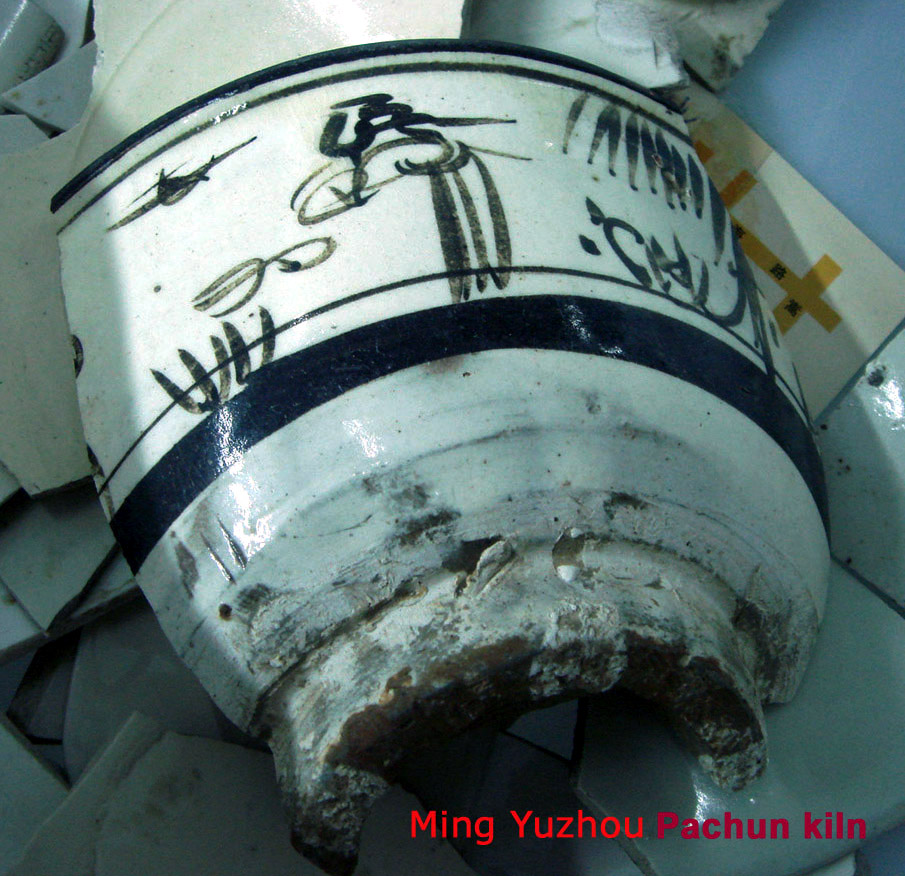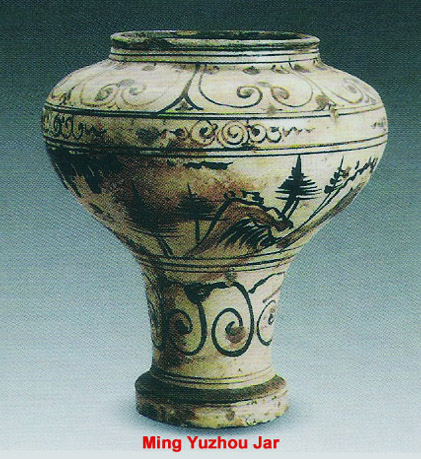
Henan Ceramics wares (河南陶瓷)
Yuan/Ming Period
When the Mongols conquered Northern China, the porcelain industry in Henan suffered severe devastation initially. With North and South China united under the Mongal empire, goods began to flow freely again. The porcelain industy in Henan faced stiff challenges from Jingdezhen and Longquan kilns whose products were comparatively more superior. As a result, the porcelain industry in the North declined and did not recover its previous glory.
In Henan, no new innovation were introduced and the kilns essentially produced ceramics only to meet local consumption. The main type of porcelains that continued to be produced were Jun, Cizhou wares and black wares.
Jun Wares
The Jun wares included those with bluish and moon white glaze. Many were decorated with copper red splashes. The glaze was generally rougher with many pores. The lower portion of the external wall of the bowls/plates were not glazed. The paste is also more coarse and footring more crudely form.
Despite the drop in quality, it was during the Yuan Dynasty that Jun wares production expanded beyond Yuzhou and Ruzhou to include many other kilns in counties such as Hebi (鹤壁), Anyang (安阳), Junxian (浚县), Xinan (新安), Jiaxian (郏县), Lushan (鲁山) and Neixiang (内乡). Some kilns in other provinces such as Hebei Cixian (河北磁县) and Shanxi (山西) Hunyuan (浑源)/Jiexiu (介休), inner Mongolia and Zhejiang Jinghua Tiedian (金华铁店) also produced them.
Despite its huge production volume, Jun wares were mainly confined to Northern China consumer market.
Cizhou Wares
Many of the kils in Henan continue to produced Cizhou iron-painted wares. They are generally more heavily potted. Besides the iron black or iron brown painted type, there were also some which used a combination of iron-black and brown. There were also type which the iron-painted motif was further incised with finer details. Pillows of the period became more elongated with a length of more than 40 cm. Many of the bowls were simply decorated with characters at the inner bottom.
Very little is known about Ming Cizhou. In fact, it is not uncommon to find the wares wrongly dated as Song or Yuan in the past. The main production centres were in Hebei Handan Pengcheng (彭城), Henan Yuzhou (禹州)and Shanxi province. For those interested in this subject, the book Ming Dai Cizhou Yao ciqi (明代磁州窑瓷器) by Guo Xuelei (郭学雷) provides a very instructive introduction on the subject.
One very distinctive type which was found in Henan Yuzhou and Hebei Handan was iron black with orangy brown painted wares. In fact, some of the motifs showed stylistic similarity with Jingdezhen Ming folk kiln blue and white. Even jars of similar shape as below were found on Ming Blue and white.


During the Ming period, there is also an interesting form of jar with a slender and lower portion.

Back to Page 3
Written by : NK Koh (30 May 2010)
References:
1. 中国陶瓷史 - 中国上海硅酸盐学会编
2. 中国古陶瓷研究 (第十五集) - 中国古陶瓷学会编
3. 明代磁州窑瓷器 -郭学雷